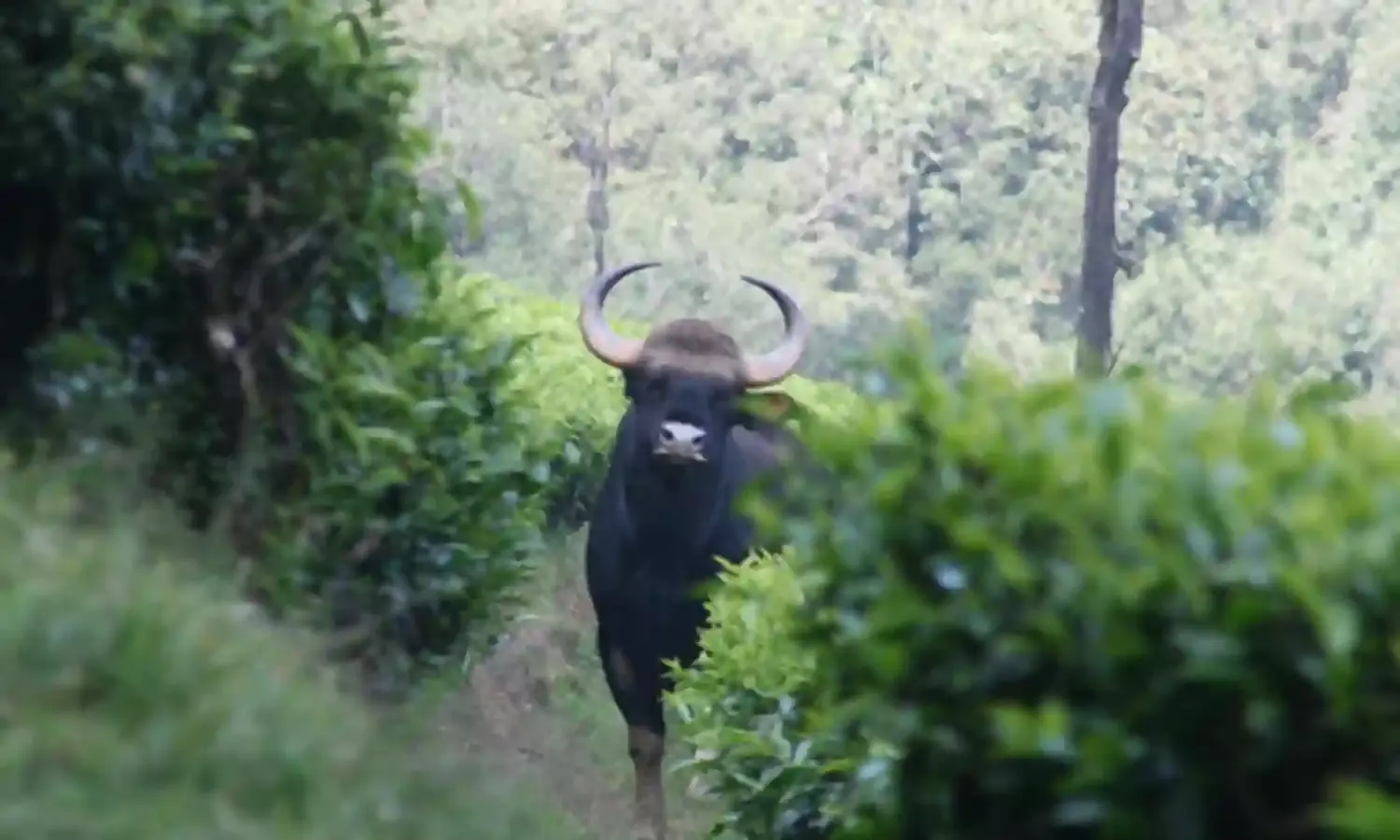The Charge of the Gaurs
This beautiful creature is the tallest species of wild cattle found in India
The Majestic Gaur or the Indian Bison is synonymous with Coonoor. As you drive through the rolling hills with the sprawling and lush green tea estates on either side, the vision of wild Gaurs grazing nonchalantly with their swishing tails is a sight to behold. So it comes as no surprise that this beautiful creature is the tallest species of wild cattle found in India and largest extant bovine.
Gaur (Bos guarus) is native to the Indian Subcontinent and listed as Vulnerable due to habitat loss but the population is stable in protected areas of South India, particular in Western Ghats and Nilgiri Biosphere Reserve. A Gaur on the run is literally a picture of pure muscle, strength and hundreds of kgs in motion.
Early mornings and late evenings are a good time to spot the carefree Gaur. A piping hot cup of tea or a steaming cup of coffee in hand with your eyes peeled on the rolling tea estates are always a delight. As the fog lifts and the swirling mist meanders away with the sun peeking through the mountain ridges in the salubrious climes of Coonoor, the waft of Nilgiri oil eases the tensions away of our lives in urban chaos. This lesser-known tea-haven is known to provide the perfect nature getaway for urban dwellers.
As much as I wanted to see the Gaurs ‘up close and personal’, I was content to watch my bovine friends blissful in their natural surroundings. We humans have no right to intrude upon their space. Eyes set on the distant hills, scanning the muddy trails that led deeper and deeper into the tea estates, our magnificent creatures moved at their own pace. Exciting evidence of how man and animal can co-exist, that is if we humans allow things to be.
Much later in the day, as we drove towards the tea estates, we noticed a commotion in the streets just short of Sims Park. As we turned the corner, we saw a herd of Gaur come hurtling down the main road towards us. Just behind them, a local bus was moving at a rather perilous speed with an insolent driver with his hand stuck on the horn. His brashness and absolutely crass behaviour was shocking. The herd were naturally in a tizzy as there were some calf in their midst who appeared frightened and agitated but the Bull was angry as hell.
We had naturally been briefed by locals about incidents where people have been injured, gorged and killed when conflicts arose between humans and the Indian gaur in the Nilgiris. A majority of them occurred in and around Coonoor Town, with the most well-known run-in occurring at the popular Sims Park, where a young couple was gored by a Gaur when they tried to get too close to it to take selfies.
We had no choice but to reverse down the slope which was no easy task. Cars and two-wheelers following us had also screeched to a halt and due to the nature of the narrow roads, it was only possible for the two-wheelers to turn around and make a hasty getaway. There was no place for us to inch our way into the side of the road as well, as there was already a line of vehicles parked in every free crevice on either side (nothing new). In all this, the bus driver didn’t for a minute lift his hand from the horn. At such times, it would be befitting to give the likes of such a tight slap and a harsh punishment.
Let me also tell you that while we had visions of the Bull tossing us in the air along with the car – or getting crushed within the confines of the car as the rippling muscles and snorting beasts came hurtling towards us, the selfie-obsessed onlookers never stopped clicking the whole show for even a second. After all, a selfie is worth more than a life (lives). At such times, it all literally boils down to seconds and quick-reactions and so we moved as close to the side of the road as we could, while the herd thundered past.
The local District Forest Officer has been very clear in saying that all the reported deaths and injuries have been either accidental or caused due to callousness of humans. Rightly said! Environmentalists also say that conflicts between gaur and humans would only intensify if people are not educated about their behaviour. Many possible threats have led to the decline in population of the Indian Bison. Humans are to blame for a large extent. The destruction in the grasslands has also led to the decline in availability of food for these animals. The prohibited hunting of the Indian Bison is done for their commercial value as well as due to the high demand of Gaur meat in the illegal market of Nepal – India border. The Indian Bison is deemed as vulnerable according to the IUCN list. Hence, the Indian Government has already included the protection of Wild Bison in the Schedule I of the Wild Life Protection Act, 1972. The Act calls for clearing of invasive plants and reintroduction of native plants in the area. It also calls for the proper regulation in the indiscriminate grazing of cattle around the areas where the Gaurs stay.
While the Nilgiris is plastic-free and a clean and green zone, it needs to get serious about educating the locals and tourists about the handling of native wildlife. This is imperative and the need of the hour.





